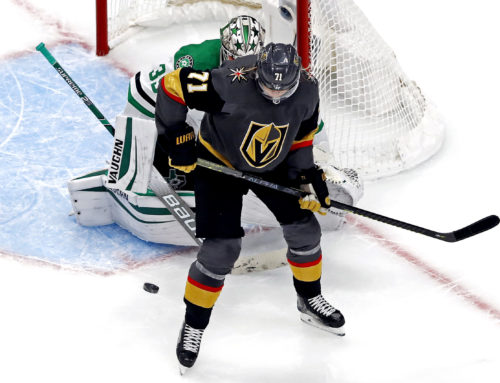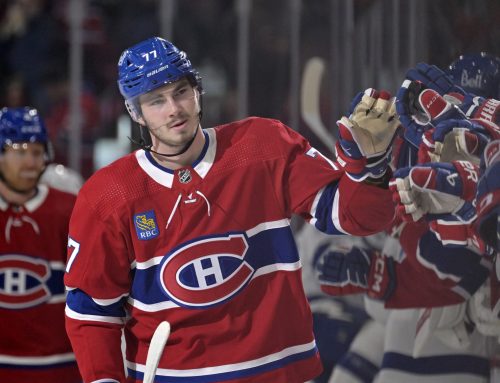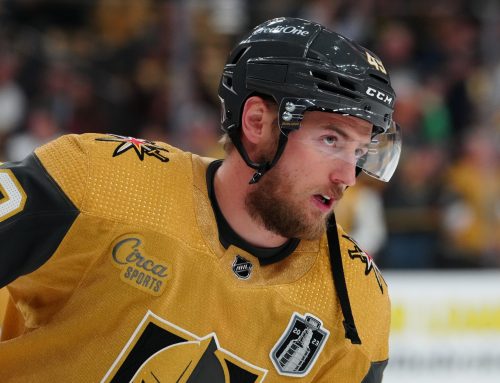Frozen Tool Forensics: Under-Performing Shooters Including Bertuzzi, Forsberg, Barkov, and More
Chris Kane
2023-09-22
Today on Frozen Tool Forensics we are returning to our shooting percentage conversations from last week. In that article we focused on players who were shooting higher than their career averages and whether or not there were underlying numbers indicating they might continue with that level of production. This week we are flipping the script and looking at players who performed worse than their recent career averages.
When reviewing players, we will be touching on their deployment, their role on the rosters, and their overall shooting percentage, but dig into a bit of what happened at various strengths (even strength/power play etc.) to see what we can learn there. The goal, of course, is to see if their scoring total from 22-23 is a new norm or if we should be seeing a return to form.
The following table is the list of the top five largest decreases. I applied a filter to the table, so this is only showing players who played at least 20 games. What remains are players who saw the biggest change in shooting percentage in 22-23 from their three-year average.
| Name | Pos | Team | GP | G | PTS | SOG | SH% | 3 YR SH% | Δ SH% |
| TYLER BERTUZZI | L | BOS | 50 | 8 | 30 | 107 | 7.48% | 13.24% | -5.76% |
| IVAN BARBASHEV | L | VGK | 82 | 16 | 45 | 125 | 12.80% | 17.80% | -5.00% |
| FILIP FORSBERG | L | NSH | 50 | 19 | 42 | 157 | 12.10% | 15.93% | -3.82% |
| ALEKSANDER BARKOV | C | FLA | 68 | 23 | 78 | 210 | 10.95% | 14.62% | -3.67% |
| TROY TERRY | R | ANA | 70 | 23 | 61 | 188 | 12.23% | 15.79% | -3.56% |
First up, Tyler Bertuzzi. He is a bit of an interesting case because of the massive changes to his surroundings. In Detroit he shot 2.2ish times per game with a shooting percentage of 10 percent. His power-play role was consistent with previous years, but his time on ice total was down quite a bit. All things being equal we likely would have expected to see his shooting percentage even back out a little. All things were not equal though as he was moved to Boston where he only scored four goals with a shooting percentage of less than nine percent. He bounced around a bit with players in and out of the lineup, so it is hard to read too much into any deployment situation. Unfortunately (for analysis, but fortunately for Bertuzzi) he is on the move again. In Toronto he is likely to suit up in the top six, but unlikely to get a lot of power-play time. Micheal Bunting (whose role Bertuzzi is conceivably taking) saw a bit under 16 minutes a night (which would be a big loss for Bertuzzi from his Detroit days) and less than two minutes on the power play (again similar loss). Bunting was able to manage 23 goals and 13% shooting in both seasons. If nothing had changed Bertuzzi would certainly be a candidate to bounce back in goal scoring. The potential drop in time on ice, and specifically power-play time, is a concern. On the plus side though if Bunting can put up a 20-goal pace given that deployment it seems pretty reasonable to expect Bertuzzi to meet that standard as well.
Ivan Barbashev's data is a little misleading. On the one hand we have a player who put up 16 goals in a season where he shot below his recent average and is poised to line up with Jack Eichel for a full season. The conventional wisdom there might tell us to buy in and maybe expect more. I am not so sure though. Barbashev's recent career average is inflated because there are a couple of seasons where he shot north of 24%. He has in fact never even been close to that average of 17.8% over a season. He has either shot about 24 percent, or 13 percent (give or take). He did go on a nice little run in Vegas last year scoring six goals and shooting about 18% but he has never sustained that for a full season. The biggest red flag for his goal production is not necessarily his confusing shooting percentage, but his shot rate. He has been a fairly consistent low-volume shooter throughout his career and even while in Vegas he was putting up 1.4 shots per game. There were only four cases of a player who put up 1.5 shots per game or fewer getting about a 20-goal pace and three of them had unsustainable shooting percentages in the mid twenties. The other player was Robert Thomas who shot at 17 percent and has a slightly better track record of doing that. Moral of this story is that Barbashev is either going to need to start shooting a lot more or get a bit of luck to increase that goal total and maintain a rate of near 20 goals per 82 games..
We are just going to go ahead and talk about Filip Forsberg like he is healthy and returning to action here. This one is actually pretty straight forward. He is on this list because his 12% shooting is a bit low compared to recent averages. That recent average number is inflated because in 21-22 he shot 18 percent, which was a large departure from his norm. That resulted in him scoring a career high 10 power-play goals, which dropped back down to a more reasonable four (6.5 over the full 82 games) in 22-23. Overall, his shot rates and his shooting percentage are pretty consistent with other past seasons so while I don't see a lot of reason for him to increase his goal rate it does seem reasonable for him to approach a 30-goal pace in the games he does play.
Aleksander Barkov is actually in much the same situation. He was going to be hard pressed to recapture the magic of the 21-22 season with Jonathan Huberdeau gone and some new coaching decisions. Barkov himself also had a career high shooting percentage that year which is inflating his recent career average number. He starts to deviate a bit from Forsberg though because he spent more time on the power-play in 22-23 so we might have expected to see a slightly higher than average shooting percentage, but his 11% rate was a bit low overall. It looks like he deserved a few more goals at even strength and if he continues to see that increased power-play time it wouldn't be surprising to see him add a couple on the man advantage too. Overall, we might see a minor increase which could push him over the 30-goal threshold (pace wise of course).
In a 'three data points make a trend' sort of situation Troy Terry fits into much the same category as Barkov. He had a great breakout in 21-22 where he shot 19 percent so falling back down to 12 in 22-23 would certainly put him on this list. Like with Barkov though he also saw increases in overall ice time, and more specifically time on the power-play. A 12.2% scoring rate seems like a reasonable baseline to start from, particularly since he was at 1% or lower for the 19-20 and 20-21 seasons. He maintained his almost three shots per game rate from the 21-22 breakout so that is good to see, but I am not seeing a lot to indicate we should be expecting a return to the near-40-goal pace from 21-22. Mid-20s seems like a reasonable starting expectation which is just about what he did in 22-23.
That is all for this week.
Do your part to support organizations working to make hockey for everyone.





 BOS
BOS TOR
TOR CAR
CAR NYI
NYI WPG
WPG COL
COL VAN
VAN NSH
NSH DAL
DAL T.B
T.B FLA
FLA VGK
VGK PIT
PIT WSH
WSH
